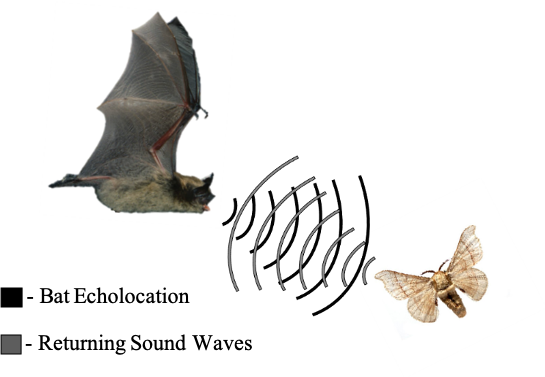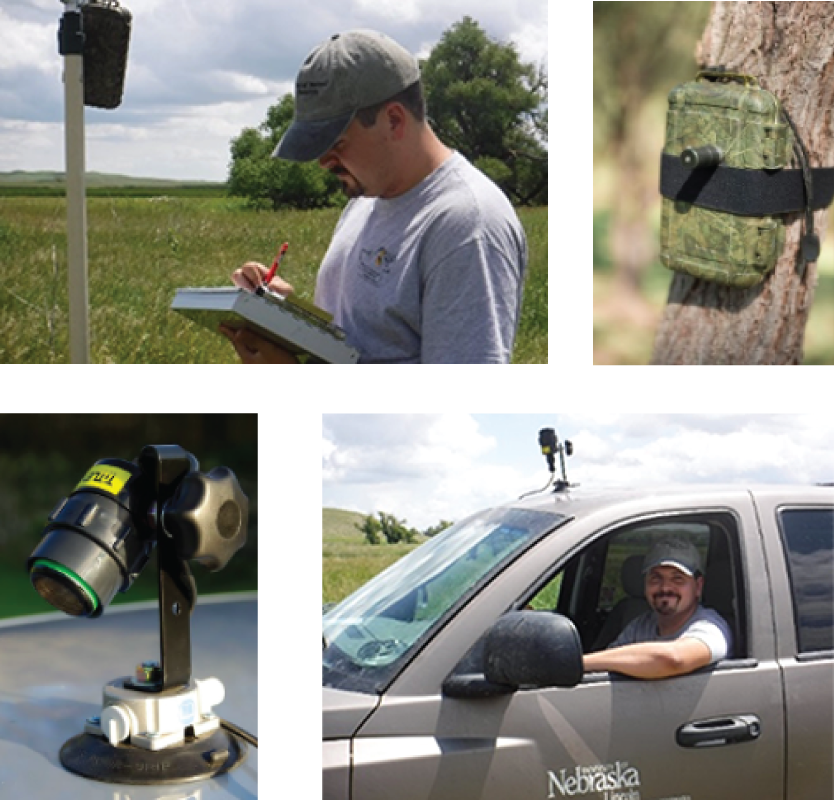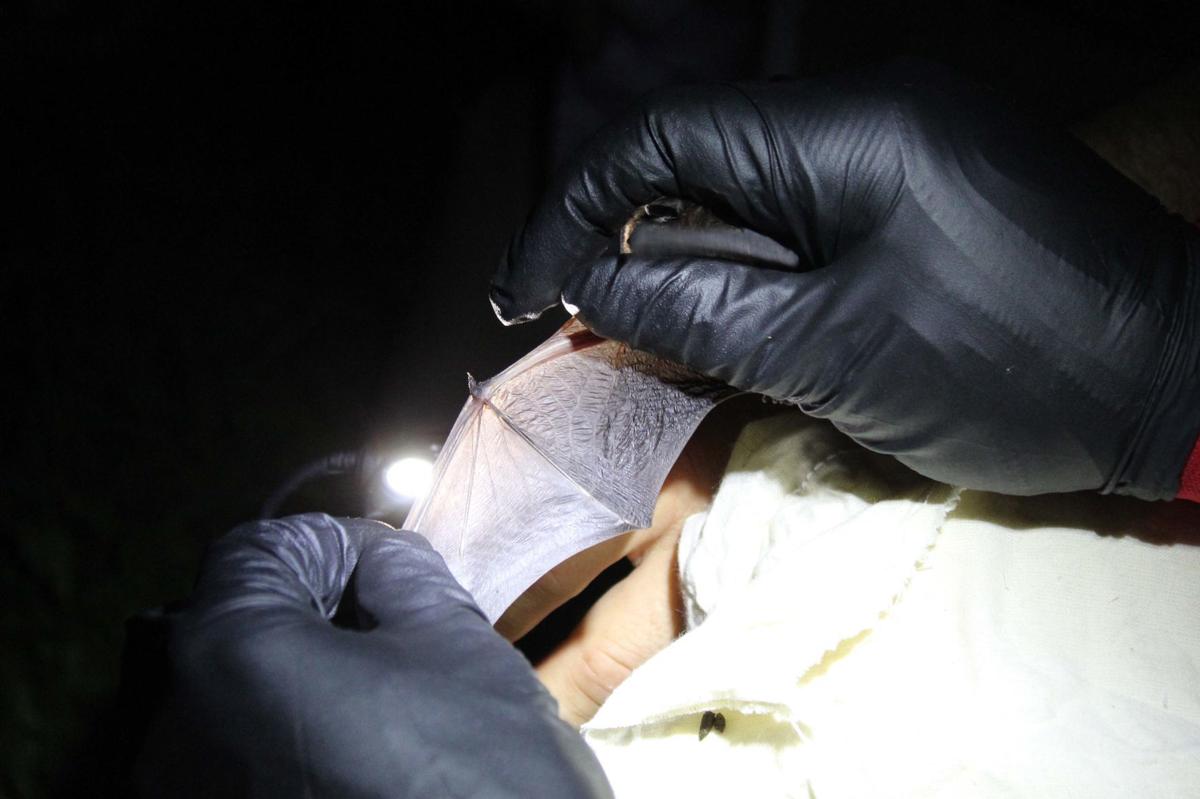The North American Bat (NABat) Monitoring Program is a research protocol that monitors bats across large landscapes. We plan to use this protocol to increase our understanding of bat populations and habitat use, which will promote the long-term viability of bat populations across Nebraska and North America.
There are 13 bat species found in the state. Nebraska is particularly interesting since it is situated where Eastern and Western bat species overlap in the United States. Bats are considered important species to ecosystems since they are influential in controlling insect populations. However, because bats have long lifespans (30+ years) and usually a breeding pair only has one young per year, bat populations are especially vulnerable to decline due to threats such as habitat destruction.
CRAWL has established 127 sampling locations and nearly 870 miles of transect survey routes across the state.


Using Sound for Research
All Nebraska bats use echolocation to find prey and avoid obstacles in the dark. Bats bounce high-frequency ultrasound off their surroundings and listen to the response to navigate and eat insects in total darkness. We use sensitive “Ultrasound Acoustic Detectors” to record the ultrasound that bats emit. Since each species of bat emits a unique pattern and call shape, we can use computer analysis to identify which bats are in the area.
Study Methods
- Stationary Sound Detectors
- We place Ultrasound Acoustic Detectors at stationary points on public and private land. These detectors passively record bat echolocation from dusk till dawn for 4 to 6 days.
- We take detailed site measurements around each detector to record the habitat characteristics that may influence bat presence.
- Car-based Driving Transects
- An Ultrasound Acoustic Detector is attached to the roof of a vehicle.
- After sunset, we drive a 15- to 30-mile transect at 20 mph on the roads near stationary detectors.
- Since we drive faster than bats can fly, we assume that each bat detected is a unique individual. This gives us a view into the bat population of Nebraska.


Upcoming Products from NAbat Program’s research includes:
- Indices of bat species abundance at multiple spatial scales
- Updated species range maps
- Probability of occupancy for each 10km x 10km grid cell
- Improved understanding of relationships to landscape features, resources and stressors
- Reports on the status of North American bats
